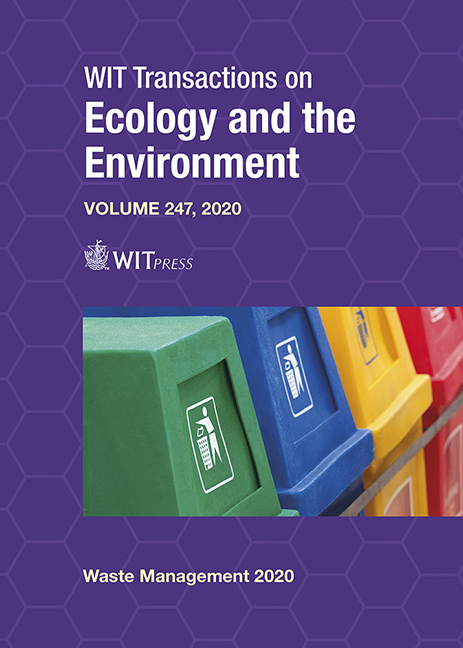DRY OLIVE POMACE GASIFICATION TO OBTAIN ELECTRICAL ENERGY IN A DOWNDRAFT GASIFIER
Price
Free (open access)
Transaction
Volume
247
Pages
8
Page Range
137 - 144
Published
2020
Paper DOI
10.2495/WM200131
Copyright
WIT Press
Author(s)
MARÍA DE LA TORRE MAROTO, JOSÉ ANTONIO LA CAL HERRERA, MANUEL MOYA VILAR
Abstract
Olive pomace is the main by-product generated by the olive oil mills, representing 80% of total fruit weight, which has high water content (60–70%). Reducing its moisture to 10–15%, the dry olive pomace (DOP) is obtained, which is a very interesting biofuel with a high calorific value (˜4,100 kcal/kg). Annually, large quantities of this product are produced, nevertheless only part of it is used for self-consumption through electrical and thermal energy generation, by combustion. Olive oil mills are industries with high electrical energy consumption. The present study aims to give added value to this material, in order to supply electrical energy to the industries for self-consumption. The pelletized DOP (PDOP) has been subject to a gasification process using a downdraft fixed-bed gasifier in a pilot plant. The gas produced – syngas – has been cleaned through different filtering stages. Subsequently, it is introduced into a genset in order to generate electrical and thermal energy. The generated syngas has very promising characteristics, such as an upper calorific value (HHV) of 1,337.11 kcal/Nm3 and a high content of nitrogen (N2) and hydrogen (H2), 47.29% and 19.54%, respectively. With this syngas, an average instantaneous power of 10 kW has been generated for 6 hours. The outcomes show the potential of using DOP as raw materials in the gasification process on an industrial scale. This allows to valorize the generated DOP in the olive oil mills and it contributes to reduce CO2, it is favored the transition to the circular economy in the olive sector.
Keywords
dry olive pomace, biomass gasification, downdraft gasifier, syngas, power generation, self-consumption, circular economy





